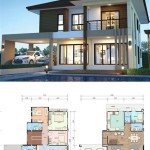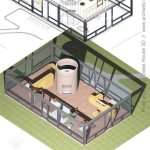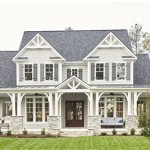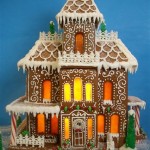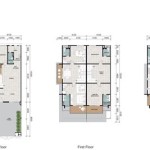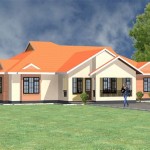Holistic House Plans: Integrating Sacred Geometry Symbols
Holistic house plans represent a growing trend in architectural design that prioritizes the well-being of occupants by considering the interconnectedness of the physical structure with the emotional, mental, and spiritual aspects of human life. One powerful method of achieving this holistic intention involves the integration of sacred geometry symbols. These symbols, rooted in ancient mathematical principles and observed patterns in nature, are believed to resonate with the human psyche and create environments that promote harmony, balance, and a sense of connection to something larger than oneself. The incorporation of sacred geometry within a home’s design is not merely aesthetic; it is intended to actively shape the energy and experience of the dwelling.
Sacred geometry is based on the idea that specific geometric shapes and proportions are fundamental to the structure of the universe and reflect a divine order. These shapes, such as the golden ratio, the Fibonacci sequence, and Platonic solids, appear repeatedly in natural phenomena, from the arrangement of leaves on a stem to the spiral of galaxies. Proponents of sacred geometry believe that these patterns possess inherent energetic qualities that can influence human consciousness and well-being. When implemented thoughtfully in a house plan, these elements are suggested to contribute to a feeling of peace, creativity, and overall vitality.
The integration of sacred geometry symbols into holistic house plans can take many forms, ranging from subtle underlying proportions to more prominent, visible features. Architects and designers practicing this approach often emphasize the importance of intention and awareness throughout the design process, considering the specific needs and desires of the inhabitants to create a space that is truly tailored to their well-being. This approach extends beyond mere aesthetics to encompass a deeper understanding of how the built environment interfaces with the human experience.
Utilizing the Golden Ratio and Fibonacci Sequence
The golden ratio, approximately 1.618, is a mathematical constant that appears throughout nature and art. It is often represented by the Greek letter phi (Φ). Many believe its presence reflects a fundamental design principle of the universe. The Fibonacci sequence, where each number is the sum of the two preceding ones (e.g., 1, 1, 2, 3, 5, 8, 13), is closely related to the golden ratio, as the ratio between consecutive Fibonacci numbers approaches phi as the sequence progresses. Architects and designers can incorporate these principles in numerous ways within a house plan to achieve visually appealing and harmonically balanced spaces.
One approach is to apply the golden ratio to the overall proportions of the house, ensuring that the length and width of the building, as well as the heights of the rooms, adhere to this ratio. This can be achieved by designing the layout of rooms, windows, and doorways to conform to golden rectangles, which have sides that are in the golden ratio. The positioning of furniture and decorative elements can also reflect this principle, contributing to a sense of visual cohesion and harmony. The Fibonacci sequence can be used to inform the arrangement of spaces, creating a natural flow and rhythm within the house. For example, the sizes of rooms could increase according to the Fibonacci sequence, creating a sense of progression and expansion as one moves through the dwelling.
Furthermore, the application of the golden ratio extends to the detailing. The placement of architectural features such as columns, arches, and windows can be informed by these proportions. The dimensions of decorative elements, such as artwork, mirrors, and built-in shelving, can also be designed to reflect the golden ratio, creating a sense of visual balance and aesthetic appeal. The meticulous application of the golden ratio and Fibonacci sequence can significantly influence the overall feeling of a house, contributing to a sense of well-being and connection to nature.
Incorporating Platonic Solids
Platonic solids are three-dimensional geometric shapes with faces that are congruent regular polygons, and with the same number of faces meeting at each vertex. There are only five Platonic solids: the tetrahedron (4 faces), the cube (6 faces), the octahedron (8 faces), the dodecahedron (12 faces), and the icosahedron (20 faces). In ancient philosophy, these solids were associated with the five classical elements: earth (cube), air (octahedron), fire (tetrahedron), water (icosahedron), and ether/spirit (dodecahedron). By incorporating these shapes into a house plan, designers aim to imbue the dwelling with the energetic qualities associated with these elements.
The implementation of Platonic solids can manifest in several ways. For example, a room might be designed with a floor plan resembling a cube to ground the space and connect it to the earth element. A pyramidal roof, reminiscent of a tetrahedron, could be used to channel energy and creativity. Octahedral skylights could bring in light and air, promoting mental clarity and communication. Dodecahedral accents in furniture or lighting fixtures could evoke a sense of spirituality and connection to the cosmos. Icosahedral patterns could be incorporated into floor tiles or wall coverings to promote emotional fluidity and adaptability.
Beyond direct geometric representation, the energetic qualities associated with each Platonic solid can be expressed through the use of color, materials, and textures. Earth tones and solid, durable materials could reinforce the grounding energy of the cube. Light, airy fabrics and the use of reflective surfaces could enhance the airy quality of the octahedron. Warm colors and dynamic forms could evoke the transformative energy of the tetrahedron. Flowing lines and watery patterns could amplify the emotional fluidity of the icosahedron. The integration of Platonic solids is not just about replicating shapes; it involves understanding the symbolic meaning and energetic qualities associated with each form and translating these qualities into tangible design elements.
Implementing Mandalas and Other Symbolic Representations
Beyond the specific shapes mentioned above, holistic house plans can incorporate a wide range of other sacred geometry symbols, including mandalas, spirals, and geometric patterns drawn from various cultures. Mandalas, circular diagrams representing the universe in Hindu and Buddhist traditions, are often used to create focal points and promote meditation and mindfulness. Spirals, representing growth, expansion, and the cyclical nature of life, can be incorporated into staircases, pathways, and landscaping. Other geometric patterns, such as the Flower of Life and the Seed of Life, can be used to create visually stimulating and energetically resonant surfaces.
Mandalas can be incorporated into the design of windows, mosaic tiles, or ceiling murals, creating a visual anchor that promotes a sense of peace and focus. They can also be used in landscaping, creating circular gardens or pathways that encourage contemplative walks. Spiral staircases can create a sense of movement and dynamism within the house, while spiral patterns in flooring or wall coverings can add visual interest and promote a sense of flow. The Flower of Life and Seed of Life patterns can be used in decorative elements, such as artwork or textiles, or subtly incorporated into the overall layout of the house to enhance its energetic harmony.
The careful selection and placement of these symbols are crucial to their effectiveness. The designer should consider the specific intention of the space and choose symbols that resonate with that intention. For example, a meditation room might benefit from a mandala design, while a creative studio might incorporate spiral patterns to stimulate inspiration. The use of color and materials can also enhance the symbolic meaning of these elements, creating a cohesive and energetically balanced environment. The integration of mandalas and other symbolic representations provides a powerful way to infuse a house with meaning and create a space that nurtures the soul.
Ultimately, the integration of sacred geometry symbols into holistic house plans requires a deep understanding of the underlying principles, a sensitivity to the needs of the inhabitants, and a commitment to creating a space that promotes well-being on all levels. It is a process that goes beyond mere aesthetics to encompass a holistic vision of the home as a sanctuary, a place of healing, and a source of inspiration.

Introduction To Sacred Geometry Rare Earth Gallery

9 Sacred Geometry Healing Symbols How To Use Them

Sacred Geometry Interior Design School By Alycia Wicker
Sacred Geometry Interior Design School By Alycia Wicker

Sacred Geometry In Design John Brevard

Sacred Geometry Symbols And Their Meanings

Isabel S Blog 10 Sacred Geometry 101 Unity Of The Circle Healing Zone World

Sacred Geometry Symbols And Meanings Holistic Kingdom

100 000 Sacred Geometry Vector Images Depositphotos

Exploring Sacred Geometry Part Ii Inner Balance Healing


